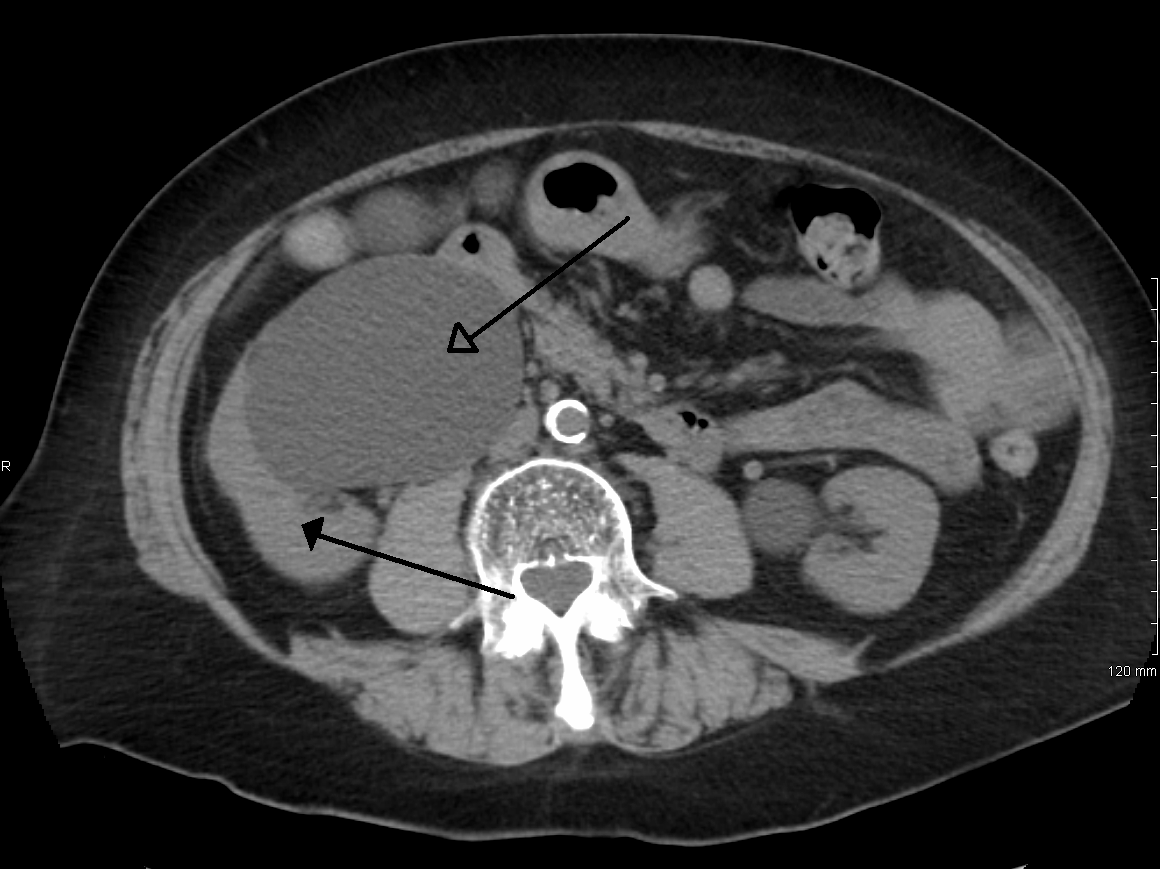Hydronephrosis MRI
Jump to navigation
Jump to search
|
Hydronephrosis Microchapters |
|
Diagnosis |
|---|
|
Treatment |
|
Case Studies |
|
Hydronephrosis MRI On the Web |
|
American Roentgen Ray Society Images of Hydronephrosis MRI |
Editor-In-Chief: C. Michael Gibson, M.S., M.D. [1]; Associate Editor(s)-in-Chief: Vamsikrishna Gunnam M.B.B.S [2]
Overview
Abdomen MRI may be helpful in the diagnosis of hydronephrosis. Findings on MRI suggestive of hydronephrosis include renal perfusion and renal diffusion during acute ureteral obstruction.
MRI
MRI is less commonly used, often when there is a reason to avoid radiation exposure e.g. in pregnancy.
- Abdomen MRI may be helpful in the diagnosis of hydronephrosis. Findings on MRI suggestive of hydronephrosis include:[1][2][3][4][5]
- Renal perfusion
- Renal diffusion
- Renal scarring
- Cortical thinning
- Genitourinary tract anomalies in children

References
- ↑ Rodríguez LV, Spielman D, Herfkens RJ, Shortliffe LD (September 2001). "Magnetic resonance imaging for the evaluation of hydronephrosis, reflux and renal scarring in children". J. Urol. 166 (3): 1023–7. PMID 11490289.
- ↑ Kirsch AJ, Grattan-Smith JD, Molitierno JA (July 2006). "The role of magnetic resonance imaging in pediatric urology". Curr Opin Urol. 16 (4): 283–90. doi:10.1097/01.mou.0000232051.66718.34. PMID 16770129.
- ↑ Riccabona M (January 2007). "(Paediatric) magnetic resonance urography: just fancy images or a new important diagnostic tool?". Curr Opin Urol. 17 (1): 48–55. doi:10.1097/MOU.0b013e3280119889. PMID 17143111.
- ↑ Morales Ramos DA, Albuquerque PA, Carpineta L, Faingold R (2007). "Magnetic resonance imaging of the urinary tract in the fetal and pediatric population". Curr Probl Diagn Radiol. 36 (4): 153–63. doi:10.1067/j.cpradiol.2007.02.002. PMID 17601535.
- ↑ Grattan-Smith JD, Jones RA (August 2008). "Magnetic resonance urography in children". Magn Reson Imaging Clin N Am. 16 (3): 515–31, vi. doi:10.1016/j.mric.2008.04.002. PMID 18585602.